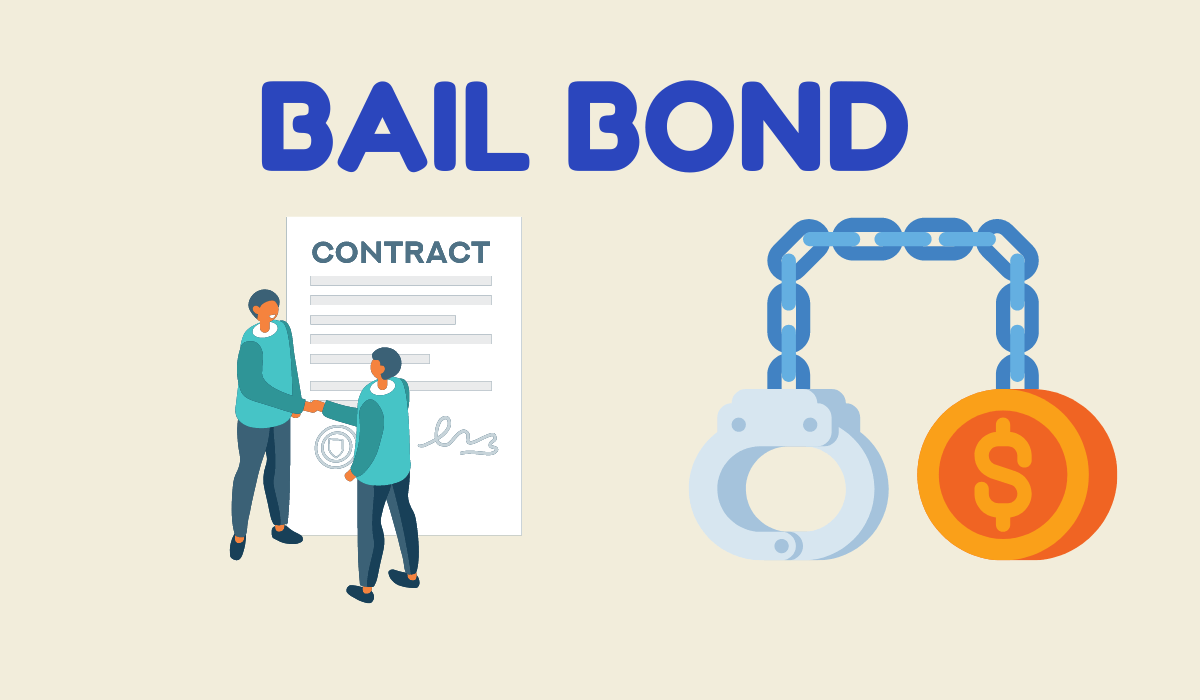Education
How Does A Bail Bond Work? A Quick Guide For First-Timers
Published
1 year agoon

Bail Bond
A bail bond is a financial agreement that allows a person who has been arrested and is being held in jail to be released before their trial. The bail bond is provided by a bail bond agent, who charges a non-refundable fee, usually 10% of the total bail amount, to post the bond. The agent acts as a guarantor, promising to pay the full bail amount if the defendant fails to appear in court.
The defendant, or a co-signer, is responsible for paying the bail bond fee, and may also be required to provide collateral, such as property or jewelry, to secure the bond. If the defendant attends all required court appearances, the bail bond is returned at the end of the case, minus any fees or expenses incurred by the bail bond agent.
Bail bonds can be used in both criminal and civil cases, and can be posted by the defendant, a family member, or a friend. Once the bail bond is posted, the defendant is released from custody and can return home while they wait for their court date.
The purpose of bail is to ensure that the defendant appears in court for their trial, as well as to protect the community. Bail can also serve as a deterrent for the defendant, as they may think twice about committing another crime if they know they could lose the bail bond and end up back in jail.
However, bail is not a guarantee of freedom, and the defendant may be required to comply with certain conditions, such as wearing an ankle monitor, surrendering their passport, or staying away from certain individuals or places. If the defendant fails to comply with these conditions, the bail bond can be revoked, and the defendant can be arrested and returned to jail.
It is important to note that not all defendants are eligible for bail, and in some cases, a judge may deny bail if they believe the defendant poses a threat to the community or is a flight risk. In such cases, the defendant will remain in custody until their trial.
In conclusion, a bail bond is a way for a defendant to be released from jail while they await their trial. However, there are costs and risks involved, and the defendant must comply with the conditions set by the court. If you or someone you know needs help with a bail bond, it is recommended to contact a licensed bail bond agent for assistance.
A bail bond is a contract between a defendant, a co-signer (usually a friend or family member of the defendant), and a bail bond agent. The purpose of a bail bond is to secure the defendant’s release from jail until their trial date.
If you or a loved one has been arrested and charged with assault, you may be able to be released from jail by posting a bail bond. Here’s what you need to know about applying for an assault bail bond:
- Contact a bail bond agent: You will need to contact a licensed bail bond agent to apply for a bail bond. The bail bond agent will explain the process, answer any questions you may have, and help you determine the cost of the bail bond.
- Provide information: The bail bond agent will need information about the defendant, including their name, date of birth, address, and the details of their arrest. You will also need to provide information about the co-signer, if there is one, including their name, address, and employment information.
- Pay the fee: The bail bond agent will charge a non-refundable fee, usually 10% of the total bail amount, to post the bond. The fee is for the bail bond agent’s services, and is not refundable, even if the defendant is found innocent.
- Provide collateral: In some cases, the bail bond agent may require collateral to secure the bond. Collateral can include property, such as a car or house, or valuable items, such as jewelry.
- Sign the contract: Once the fee and collateral have been secured, the bail bond agent will provide a contract that must be signed by the defendant and the co-signer. The contract outlines the terms of the bail bond and the responsibilities of the defendant and the co-signer.
- Wait for release: Once the bail bond has been posted, the defendant will be released from jail. They will need to comply with any conditions set by the court, such as wearing an ankle monitor or surrendering their passport.
It is important to keep in mind that applying for a bail bond is a legal and binding agreement, and failure to comply with the terms of the bond can result in serious consequences, such as revocation of the bond and the defendant being returned to jail. If you or someone you know needs help with an assault bail bond, it is recommended to contact a licensed bail bond agent for assistance.
Determining the Bail Amount
The bail amount is set by a judge and is based on several factors, including the defendant’s criminal history, the severity of the crime they’re charged with, and the risk of flight. The bail amount is meant to ensure that the defendant will return for their trial.
- Nature of the crime: The severity of the crime the defendant is accused of committing is a major factor in determining the bail amount. For example, a defendant charged with a violent crime may have a higher bail amount than a defendant charged with a non-violent crime.
- Criminal record: A defendant’s prior criminal history may also be taken into consideration when determining the bail amount. A defendant with a history of failing to appear in court or a history of criminal activity may have a higher bail amount.
- Flight risk: If the judge believes that the defendant is a flight risk, meaning they are likely to flee the jurisdiction rather than appear in court, they may set a higher bail amount to ensure the defendant’s appearance.
- Financial resources: The defendant’s financial resources may also be taken into consideration when setting the bail amount. If the defendant has significant assets, the judge may set a higher bail amount to ensure the defendant’s appearance in court.
- Local bail schedules: In some jurisdictions, bail schedules are used to set bail amounts for specific crimes. The bail schedules are based on the type of crime and the defendant’s criminal history.
Contacting a Bail
Bond Agent Once the bail amount is determined, the defendant or their co-signer can contact a bail bond agent to secure their release from jail. The bail bond agent will then explain the terms and conditions of the bail bond and require a fee, usually 10% of the bail amount, for their services.
Filling Out the Bail Bond Agreement
The bail bond agreement is a legally binding document that outlines the terms and conditions of the bail bond. It requires the defendant and the co-signer to agree to the terms and sign the agreement.
Payment of the Bail Bond Premium
The bail bond premium is the fee charged by the bail bond agent for their services. This fee is usually 10% of the bail amount. The premium must be paid in full before the bail bond can be processed.
Securing the Defendant’s Release
Once the bail bond agreement is signed and the premium is paid, the bail bond agent will secure the defendant’s release from jail. This is typically done by posting a surety bond with the court, which acts as collateral to ensure the defendant’s appearance at their trial.
Monitoring the Defendant
The bail bond agent is responsible for monitoring the defendant to ensure they comply with the terms and conditions of the bail bond. This includes ensuring the defendant attends all court appearances and adheres to any other conditions set by the court.
Failure to Comply
If the defendant fails to comply with the terms and conditions of the bail bond, the bail bond agent can revoke the bond, and the defendant will be rearrested and returned to jail. The co-signer is also responsible for ensuring the defendant complies with the terms and may be held financially responsible for any expenses incurred during the defendant’s rearrest.
Return of Bail Bond Premium
If the defendant attends all court appearances and complies with the terms and conditions of the bail bond, the bail bond premium is returned to the co-signer at the end of the trial.
Conclusion
A bail bond is a legal agreement that allows a defendant to be released from jail until their trial date. It requires a fee to be paid to a bail bond agent, who is responsible for securing the defendant’s release and monitoring their compliance with the terms and conditions of the bail bond. If the defendant complies with the terms, the bail bond premium is returned to the co-signer at the end of the trial.

Trending

 Banco4 years ago
Banco4 years agoBanjercito

 Gaming3 years ago
Gaming3 years agoNBA 2K21 Best Controller Settings

 Social Media3 years ago
Social Media3 years agoHow to prepare a publication schedule

 Indonesia4 years ago
Indonesia4 years agoSerial Number CorelDraw X7 Aktivasi Kode 64/32 Bit | Dijamin Bisa

 Filmora4 years ago
Filmora4 years agoWondershare Filmora 9 Activation Key and Email Free 2020

 Education1 year ago
Education1 year agoJuan Monteverde on the Unexpected Costs of Corporate Fraud

 Indonesia3 years ago
Indonesia3 years agoMangastream – 15 Alternatif Terbaik untuk Membaca Manga Online [2021]

 Education4 years ago
Education4 years ago28 Best Bane Quotes From The Movie “The Dark Knight Rises”
You must be logged in to post a comment Login